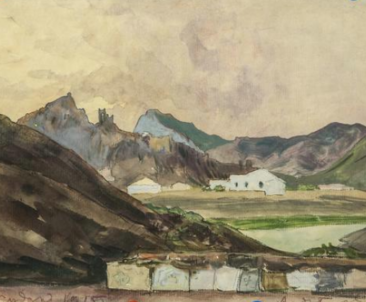

Alexander Benois is a Russian painter, graphic artist, illustrator, theater artist, outstanding publicist and critic. He was born on May 3, 1870, becoming the fifth child in the family of architect Nikolai Leontievich Benois. Interest in ancient engraving, the copying of old masters in the museums of Italy and France formed a special artistic taste of the master.
Benois at the end of the XIX century, together with Sergei Diaghilev founded the association “World of Art”, and later became the editor-in-chief of the eponymous magazine. The artistic orientation of the “World of Art” was associated with modernity and symbolism. Prioritizing the aesthetic principles in art, Alexander Benois, the ideological inspirer of the association, preferred stories historical rather than real. However, in 1915, during a trip to Sudak, where the artist was resting in the house of his niece Camille Benois, he created the delicious, delicate and airy watercolor landscapes of the surroundings of Sudak. One of these works is kept in the Voronezh Regional Art Museum named after IN Kramskoy. Pike perch Benoit is not only restrained beauty of landscapes, it is some timeless space that brings back the viewer during Odysseus’ travels. Exquisite and complex coloring in combination with strict graphics of the picture captivates with its restrained aristocracy.
In the landscapes of Alexander Benois there is theatricality – nature interests him mainly in its connection with history. Alexander Benois worked a lot as a theater artist, making performances not only in Russia, but also in such famous theaters as La Scala in Milan. He took part in the design of Diaghilev’s Russian Seasons in Paris, created scenery for ballets and dramatic plays.
The decoration of the “Weddings of Figaro”, staged in 1926, Benoit’s last work in Soviet Russia. In the same year Alexander Nikolaevich Benois moved to Paris, where he died on February 9, 1960.